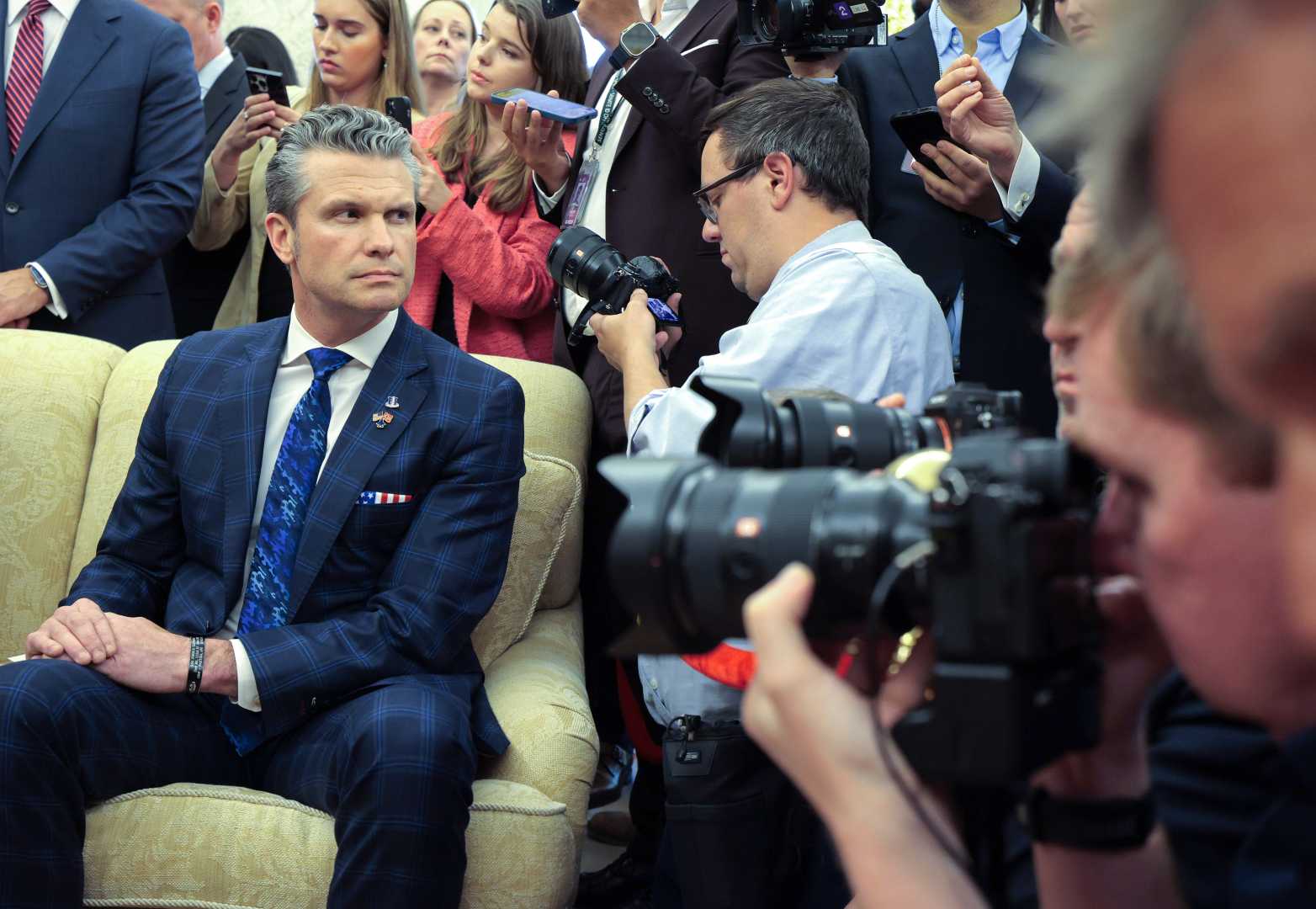News
Trump Administration’s Aid to Ukraine Interrupted by Hegseth’s Decision

NEW YORK/WASHINGTON, May 6 (Reuters) – Just days into Donald Trump‘s second term as president, U.S. military operations were disrupted when Defense Secretary Pete Hegseth ordered three freight airlines to halt 11 flights carrying military aid, including artillery shells, to Ukraine. The order raised immediate concerns among Ukrainian officials in Kyiv and their counterparts in Poland, who were coordinating the shipments.
Within hours, questions flooded Washington from Ukrainian officials seeking clarification on the suspension, which senior national security officials in the White House, Pentagon, and State Department were unable to explain. The flights resumed within a week, but confusion lingered about Hegseth’s authority.
The verbal order to stop the flights, according to U.S. Transportation Command (TRANSCOM) records, originated from Hegseth’s office following a January 30 Oval Office meeting that included Trump and top national security officials. Although the topic of pausing aid to Ukraine was discussed, Trump did not instruct a halt to assistance.
A TRANSCOM spokesperson confirmed the command received Hegseth’s order via the Pentagon’s Joint Staff. The White House later stated that Hegseth was following a directive from Trump regarding aid to Ukraine, a detail not shared with other key officials present during the meeting.
The suspension of flights, recorded as costing TRANSCOM $2.2 million, highlights internal disarray within the Trump administration concerning foreign policy and aid logistics. Multiple sources described this incident as a prime example of a chaotic decision-making process, exacerbated by a lack of communication and coordination among top officials.
Ukrainians were left scrambling for answers when the flights were momentarily paused. Subsequently, the administration attributed the interruption to “internal politics.” Five individuals with knowledge of the situation confirmed the considerations and discussions leading to Hegseth’s decision.
The day after the order’s issuance, key aides to Hegseth were escorted from the Pentagon amid claims of unauthorized disclosure of classified information. This departure intensified scrutiny of the Defense Secretary and raised questions about existing command structures within the military.
Amid discussions to streamline U.S. aid, some of Hegseth’s advisors reportedly recommended halting military support, mirroring ongoing debates within the Trump administration about foreign military commitments. Although the idea of a cutoff was surfaced, Trump ultimately chose not to act against Ukraine during the January 30 meeting, leaving the decision-making to his subordinates.
The gravity of halting military support aimed at an ally during an active conflict was not lost on military experts. Mark Cancian, a retired Marine officer, noted, “This is consistent with the administration’s policy to move fast, break things, and sort it out later.”
The shipments that were interrupted consisted of military equipment previously approved under the Biden administration, demonstrating the complexities of U.S. military assistance policies.
As negotiations surrounding the Russia-Ukraine conflict continue, it remains unclear how these internal conflicts within the Trump administration will affect future support for Ukraine. The Pentagon’s handling of such decisions and the involvement of various agencies remain under the microscope as officials navigate these turbulent waters.
The White House is facing continued pressure to clarify its stance on military support for Ukraine with upcoming meetings expected to address these policy shifts as the situation evolves.












